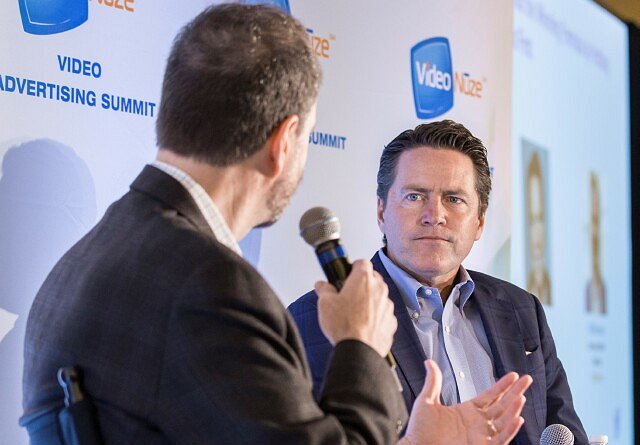Generation Stream is Hulu’s
term for those “culturesetters” who are on the forefront of cultural change and
whose media consumption is mostly or completely streamed video. No longer
gathered around the television set with family members, these individuals are
best categorized as the harbingers of media-to-come.
But who are
they really? Hulu decided to find out by conducting a major study in April
2020. Julie DeTraglia, Head of Research for Hulu designed the study, first with
a primary component that queried 20 diverse “Culturesetters” ages 16 to 44.
Then, using insights gleaned from that group, she launched a national survey of
2,500+ diverse Gen Zs, Millennials and Gen Xers, ages 13 to 54. According to DeTraglia,
“We tested trends and further explored streaming behavior and preferences. The
result included an expansive multi-chapter report, testimonials and curated
videos on streaming trends, types, behaviors, classifiers and
reactions/preferences around advertising in streaming.”
Overall Trends
Generally
speaking, DeTraglia found that the 13-54 year olds polled in the study were
either heavy users of streaming services or intended to subscribe to a
streaming service. This indicates a further advancement of streaming as a more
dominant form of media consumption in the coming years. “Diving into the
experiences and moods of Generation Stream further cements streaming TV as a
foundational part of a viewer’s day,” she explained. The study found that:
90% view TV and movie content on a video
streaming platform
75% fill their media consumption time streaming
or mostly streaming the video content
Among non-streamers, 57% anticipate subscribing
to a streaming service within the next 5 years
Generation Stream
Generation
Stream is the prevailing consumer segment, representing 90% of all 13-54 year
old Americans who stream content. And they love streaming content. According to
the findings, 91% of Generation Stream would give up their music streaming
service, social media, favorite food, favorite fashion item and favorite brand
before they gave up their video streaming service. In fact, the only thing
other than video streaming they aren’t willing to give up is their hair.
DeTraglia
pointed out that, “The ripple effect of streaming is as powerful as it is universal.
Virtually all (95%) of Generation Stream say streaming has changed their
viewing experience in at least one way, from being able to binge content to
having more control over their viewing experience to watching
niche
content.” Streaming enables this cohort to watch totally on demand. “They are
untethered from the 24-hour day, primetime slots, Nielsen ratings, or set
commercial breaks, content has newfound wiggle room,” she added. But this
brings with it added expectations for more left-of-center shows, more
multidimensional characters, more bingeable seasons and generally more content.
Over one-third (35%) of Generation Stream says, because of streaming, they
watch more content than ever before it is changing their viewing behavior and
expectations.
Diving down
a little deeper, Generation Stream falls into three key segments of behaviors -
Those who are Stream Only (37%), Stream Most (47%) and Stream Also (16%).For
Hulu specifically, 86% of Hulu subscribers fall into the top two groups - Stream
Only (41%) and Stream Most (45%).
The way Generation
Stream uses streaming services fall into four behavioral types:
1.
Classic: These viewers tend to stream content in
the same manner as people watch traditional TV—at set times, with family,
friends or a partner and as part of a daily routine.
2.
Curated: This group is more selective in their
streaming content, centering on intelligent, niche and global content that is more
than just pure entertainment. They tend to favor shows and movies that spur a
cultural conversation to connect them with like-minded communities.
3.
Therapeutic: This group favors streaming content
that is more meditative and therapeutic, presumably because it reminds them of
childhood, or enables them to lightly reflect.
4.
Indulgent: This group favors streaming content
that is totally immersive. They enjoy being fully consumed with shows, ‘holing
up’ for a weekend solo to binge through several seasons of a favored program.
The results
of this study will help inform the industry going forward. “The insights in
this report uncover what inspires and moves this audience, so that Hulu and our
partners can connect with them in meaningful ways, with content, brands and
advertising. By exploring this coveted audience, who has been watching TV in a
streaming environment for over a decade, ‘Generation Stream’ helps us
understand the why, who and how of streaming TV viewers, and will continue to
do so in the coming reports,” she concluded.
This article first appeared in www.MediaVillage.com

 Hulu
continues to keep up with the times. When it first launched 11 years ago it was
100% desktop delivered. Now, according to Peter Naylor,
Hulu
continues to keep up with the times. When it first launched 11 years ago it was
100% desktop delivered. Now, according to Peter Naylor, 